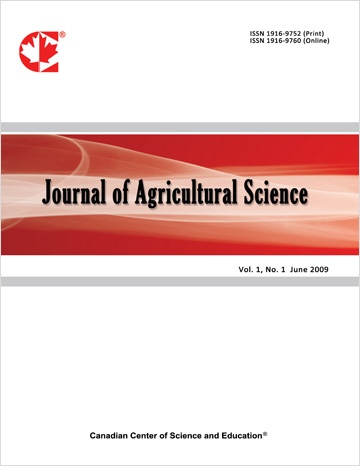Influence of Crop Establishment Techniques, Fertilization and Microbial Consortia on Potassium Nutrition of Wheat
- Amit Anil Shahane
- Yashbir Singh Shivay
- Radha Prasanna
- Dinesh Kumar
Abstract
A field experiment was conducted for 2 years (2013-14 and 2014-15) during winter (Rabi) season at Research Farm of ICAR-Indian Agricultural Research Institute, New Delhi, India with an objective to study the significance of two microbial consortia inoculations, zinc (Zn) fertilization (5 kg Zn ha-1 through ZnSO4∙7H2O soil application in each crop at sowing) and three rates of nitrogen (N) and phosphorus (P) fertilization on potassium (K) concentration, uptake and as well as ammonium acetate (NH4OAC)-extractable K content in soil at different growth stages in wheat. The microbial consortia used were Anabaena sp. (CR1) + Providencia sp. (PR3) and Anabaena-Pseudomonas biofilmed bio-fertilizer; while rate of fertilization were 0, 75% and 100% of recommended rate of nutrients (RDN) (120 kg N ha-1 and 25.8 kg P ha-1). The concentration and uptake of K was significantly higher in zero tillage wheat (ZTW) than conventional drill-sown wheat (CDW) and system of wheat intensification (SWI) at all observations except at 30 days after sowing. The application of 100% RDN and Zn fertilization have significant and positive effect on K uptake. The microbial consortia increase K concentration and uptake by 0.09-0.12 mg kg-1 and 9.9-12.7 kg ha-1 in straw and 0.08-0.11 mg kg-1 and 3.8-5.6 kg ha-1 in grain. The soil ammonium acetate (NH4OAC)-extractable K decreased by 87-108 kg ha-1 and 19-44 kg ha-1 in first and second year, respectively over initial soil K even after application of recommended rate of K (49.8 kg ha-1). Our study concludes the significant increase in K uptake due to ZTW and use of microbial consortia and there is the need for redeciding K fertilization in wheat for sustained productivity.
- Full Text:
 PDF
PDF
- DOI:10.5539/jas.v12n12p95
Journal Metrics
- h-index: 67
- i10-index: 839
- WJCI (2023): 0.884
- WJCI Impact Factor (2023): 0.196
Index
- AGRICOLA
- AGRIS
- BASE (Bielefeld Academic Search Engine)
- Berkeley Library
- CAB Abstracts
- ChronosHub
- CiteSeerx
- CNKI Scholar
- Copyright Clearance Center
- CrossRef
- DESY Publication Database
- DTU Library
- e-Library
- EBSCOhost
- EconPapers
- Elektronische Zeitschriftenbibliothek (EZB)
- EuroPub Database
- Excellence in Research for Australia (ERA)
- Google Scholar
- Harvard Library
- IDEAS
- iDiscover
- Jisc Library Hub Discover
- JournalTOCs
- KindCongress
- LIVIVO (ZB MED)
- LOCKSS
- Max Planck Institutes
- Mendeley
- MIAR
- Mir@bel
- NLM Catalog PubMed
- Norwegian Centre for Research Data (NSD)
- Open J-Gate
- OUCI
- PKP Open Archives Harvester
- Polska Bibliografia Naukowa
- Qualis/CAPES
- RefSeek
- RePEc
- ROAD
- ScienceOpen
- Scilit
- SCiNiTO
- Semantic Scholar
- SHERPA/RoMEO
- Southwest-German Union Catalogue
- Standard Periodical Directory
- Stanford Libraries
- SUDOC
- Swisscovery
- Technische Informationsbibliothek (TIB)
- Trove
- UCR Library
- Ulrich's
- UniCat
- Universe Digital Library
- WorldCat
- WRLC Catalog
- Zeitschriften Daten Bank (ZDB)
Contact
- Anne BrownEditorial Assistant
- jas@ccsenet.org
